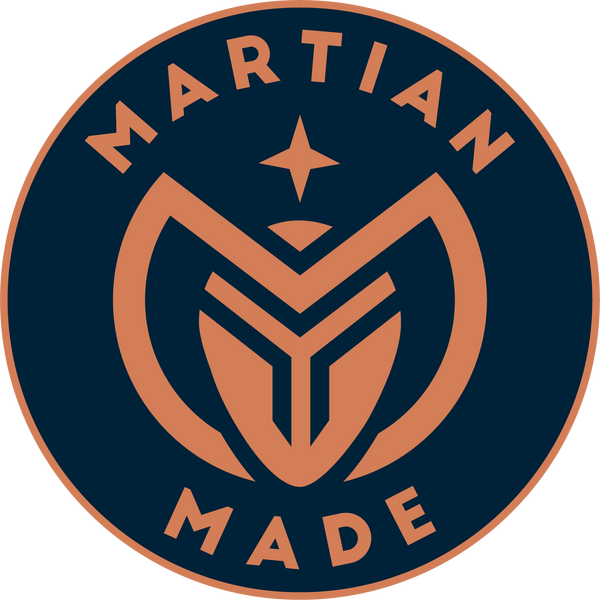If you've ever found yourself squinting at one of our blog images thinking, “Is that real?” - you're not alone. The answer? Sort of. Not quite. Not exactly. Most of our visuals are, in fact, AI generated. And no, we’re not sorry about it. Quite the opposite.
We’ll let you in on the secret. It’s all part of the plan.
Welcome to the Martian Method
At Martian Made, we redesign the everyday with a wink, a nudge, and the occasional cheeky defiance of gravity. Our products are proudly planet friendly, meticulously crafted, and just the right amount of odd. So when it came to our blog imagery, we asked ourselves what’s the point of staying tethered to reality?
The real world is nice. Useful. Full of lovely textures. But we’re not in the business of ordinary. We wanted visuals that felt as futuristic and playfully off kilter as the ideas they sit beside. And what better medium than AI, a technology quite literally built on reimagining what’s possible?
It’s Not Stock, It’s Storytelling
We’re not interested in beige stock photography of suspiciously enthusiastic people holding mugs. That’s not our orbit. Our AI generated visuals are concept first. Designed to evoke a mood, twist an idea, or nudge a thought further. Sometimes surreal, sometimes sleek, always on brand.
It’s creative direction at light speed. It’s future facing. It’s how we visualise thoughts before they’ve fully arrived on Earth. Think of it as editorial dreaming with a digital paintbrush.
No Guilt, Just Gorgeous Weirdness
Let’s be clear. This isn’t a compromise. It’s a choice. Our AI images aren’t placeholders or shortcuts. They’re part of our visual language. A Martian dialect, if you will. And in a world where everyone’s trying to look “authentic” by being the same, we’re opting to be genuinely, delightfully different.
It also gives us the freedom to build a visual universe as bold and strange as our brand values. Not to mention, it’s far kinder to our footprint than flying teams of photographers across the galaxy just to shoot a cushion in flattering morning light.
The Future’s in the Frame
Will we still use photography sometimes? Of course. Real things are great. We sell them, after all. But when it comes to storytelling, exploring ideas, and nudging the edges of what design can mean, AI helps us paint in broader strokes.
So if our visuals make you do a double take, raise an eyebrow, or tilt your head like a curious dog, perfect. That’s the Martian effect. A little strange. A lot intentional.

